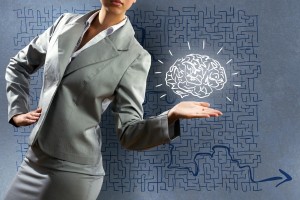 New technologies that enable doctors and scientists to peer directly inside the human brain without a scalpel are upending many long-held beliefs about human behavior, emotions and health. It was once thought that by the time we reach early adulthood, the human brain was fixed, immutable and rigid. But research shows otherwise. It is possible to “teach an old brain new tricks.” That’s social neuroscience.
New technologies that enable doctors and scientists to peer directly inside the human brain without a scalpel are upending many long-held beliefs about human behavior, emotions and health. It was once thought that by the time we reach early adulthood, the human brain was fixed, immutable and rigid. But research shows otherwise. It is possible to “teach an old brain new tricks.” That’s social neuroscience.
Here’s an example: neural scans demonstrate how stress and anxiety activate certain regions of the brain, and positive emotions like happiness activate different regions of the brain. Think of it this way, our brains have their own built-in H-Spots.
If nature wired the human brain for happiness, why do so many of us go through life feeling depressed, lonely or sad? We’ve never been taught how to harness the brain’s innate potential for happiness. We literally possess the ability to sculpt the brain to be happy or sad.
All the latest findings in neuroscience suggest that the brain can change and adapt to experiences. When you consciously change your thoughts and shift the focus of your attention, you physically change your brain—and your life!
These amazing features include:
- neuroplasticity (the ability for the brain to adapt and rewire itself),
- mirror neurons (systems in the brain that allow for empathy and compassion),
- the brain’s H-Spot (the brain’s happiness area).
A specific branch of neuroscience, known as social neuroscience, is a revolutionary 21st century discipline that explores the dynamic interrelationship of the human brain in the context of social behavior. In the past decade, the social science disciplines of traditional psychology and sociology are converging with the rapidly developing field of neuroscience in an innovative manner that is transforming the domain of everyday life, from the corporate boardroom to the classroom.
Social neuroscience augments the traditional field of psychology by offering insights into brain structures influence social behavior in both individuals and groups. On the other hand, psychology focuses on the “software” of our mind and how the mental terrain of our thoughts and emotions influence human behavior. Neuroscience emphasizes how the neural mechanisms of our thoughts, memories, emotions, and desires physically alter the “hardware” of the brain that, in turn, affects our behavior. While the non-physical mind and brain are distinct constructs, we now understand that they actually work in a complementary and interdependent relationship. Neuroscience is the missing piece to psychology that enables us to better understand the complex interaction between our brain, body and being.